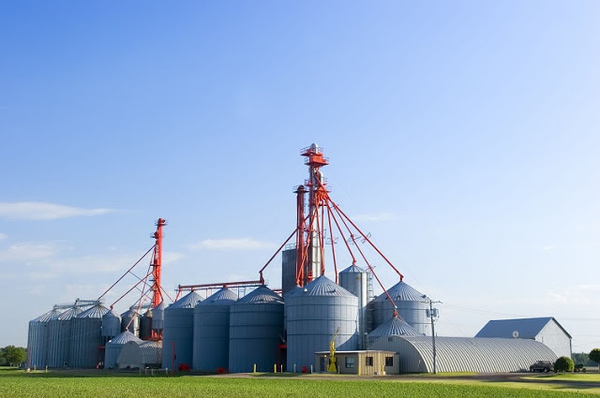Grain Storage Tips for Winter

With the inevitable population growth, billions after billions of grain are being produced yearly globally; it is crystal clear that grain storage plays a significant role in modern agricultural farming. However, because of the way to meet the increasing demands on the production of grain, often due to the lack of proper post-harvest operations, a vast percentage of grain is lost.
But when done right with proper monitoring and management, stored grain can be protected over a long period, keeping the post-harvest losses of grain to the minimum. So the solutions to reduce the high loss of grain require a relatively modest investment in the grain preservation system.
Why consider proper grain storage practices throughout winter?
Your job of protecting your grain doesn't end once you are done harvesting; instead, the grain requires continuous protection, especially in the post-harvesting phase. Especially in the winter season, the storage problem becomes an issue due to the snow and cold temperature. Otherwise, if they are left unchecked, there will be profound changes in quality loss leading to spoilage and insect activity. Also, the risk of moisture-related problems arises as the moisture-holding and drying capacity of winter air is minimum. And all these issues make winter the season that requires proper storage practices to prevent grain from going out of condition.
Tips on managing a safe and successful grain storage
So to protect your harvested grain during wintertime, being proactive with your grain storage solutions and strategy is vital for long-term grain preservation. Here are some tips that you can consider keeping in mind to manage your stored grain through winter.
Planning ahead is rewarding
Before you jump on preparing your grain, think ahead and consider some situations prior to your move. Such as, the following questions can be taken into consideration.
• What kind of grain and how much of it will you store?
• Does the grain get dried fully?
• Did you fumigate the beans prior to storing them?
• Do you have enough facilities to prevent damage from wind and snow?
• Do you have enough space and material available?
• How will you deal with possible grain loss in storage?
So these are some issues you can check out to prevent any kind of mismanagement during the grain storing process.
Selecting the safest surface or location
You have to make sure that the location you selected to store grain is free of insects, pests, mites or any sort of bacteria that can contribute to germinating the grain. Otherwise, this kind of insect or other biotic components can cause fungal growth, making the grain hazardous for consumption and reducing the nutritional values or other vitamin contents. And that is why you have to select a location, ensuring proper aeration and correct fumigation before filling the grain.
Picking the perfect storage method
However, throughout the world, there are several different grain storage solutions that you can employ in seed storage; hence choosing the right one for your operation is your key to success. From traditional to modern, you can pick any among the several storage methods for grain storage. Such as, in the traditional storage method, the grain is stored in bulk in a semi-open, open or closed situation. This storage method can be used to reduce the post-harvest losses of grain if that is sufficiently aired and moisture-proof.
But suppose you seek to use a more improved and modern storage method with more capacities than the traditional one. In that case, you can choose grain silos which can be made of various materials like cement, metal, concrete, brick, sand etc. From squat silo to vertical silo, tower silo to horizontal silo, there are various silos that come with multiple configurations.
Monitoring the temperature and moisture level
During winter, you have to monitor the temperature and moisture level frequently. Therefore, you can think about aeration as a means to control the temperature and moisture level of grain, which offers numerous benefits. Aeration is adequate for efficient cooling, ensures uniform temperature and minimises insect activities in grain storage. Also, in concert with aeration, you can use a temperature monitoring system or monitoring thermometer to measure the temperature of the grain. And to reduce the risk of moisture, provide special attention to the appearance of condensation, which seems very problematic during the winter month.
Continuous inspection
In order to hold the quality of the grain as well as to prevent insect activity, you need to check on the grain routinely. Even the aeration system also requires regular maintenance during winter. Frequent checking also helps you catch any issue in advance before it turns into huge spoilage. And detecting any problem prior, you can figure out the cause and apply a way to prevent it.
Discover some advanced grain storage solutions in Advantec
Established in 1998, Advantec has become a trusted name among Australian farmers meeting all the demands of providing advanced Sustainable Agricultural Machinery (SAM) Developments products to them. It also offers a range of storage solutions, including an environment-friendly ventilation system to modern grain silos for storage. In addition, Advantech's special storage facilities for grains are designed to fulfil any sort of storage needs. Like you can go for its feature-loaded 'Grain Guardian' storage system for large-out leading access or 'Grain Storage Rings' as a temporary solution to store your grain. Also, you could use 'Curvet Sheds' and 'Grainair Tubes' as advanced solutions to meet all your storage needs.
So in case you are in search of industry-leading storage solutions to make your seed storage system as safe and easy as possible, consider Advantec's grain storage solutions for long-term reliability and performance.
